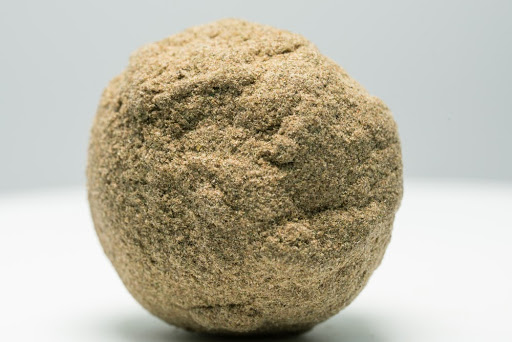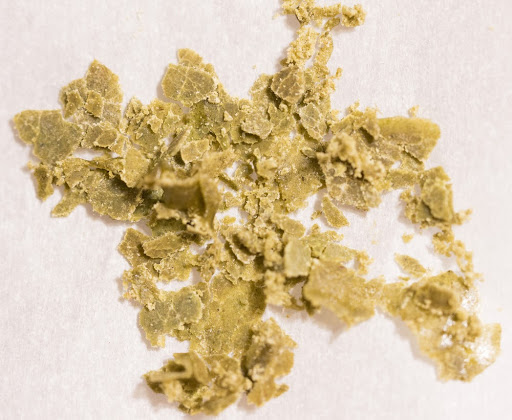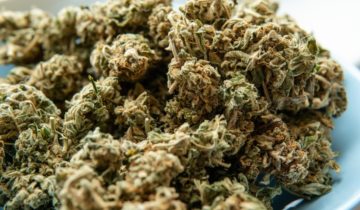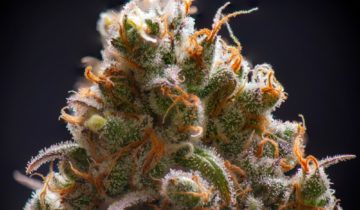How is hash made? Well, this centuries-old cannabis concentrate has definitely come a long way since its humble beginnings. Currently, there are several different methods for making hash. But, regardless of whether you are using old school methods or new-school techniques, the process of making hash is relatively simple.
All of the various methods consist of the same basic processes; agitate the cannabis to remove the trichomes, collect the trichomes, sort the trichomes by size, and then dry and compress the trichomes.
Below we will explore the most popular modern methods for making this wonderful form of concentrated cannabis. But first, let’s dig into exactly what this cannabis concentrate is and from where it is derived.
What is Hash?
So, exactly what is hash? Well, the answer to that question is that hash is simply a concentrated form of cannabis. However, what many cannabis users are not aware of is the fact that the THC and the other cannabinoids that the cannabis plant produces are actually contained in the plant’s trichomes rather than in the plant’s cells.
Therefore, hash is simply a collection of these trichomes. By removing the trichomes from a cannabis plant, a person can create a highly concentrated form of cannabis.
Did you know that hash or, hashish, appears to date all the way back to the 11th century A.D? Hash is believed to have been introduced throughout Asia, Persia, and Arabia by the Mongols. However, the origins of the word hashish are actually Arabic in nature and means “grass” in Arabic.
Furthermore, according to ancient records, hash was originally eaten rather than smoked as most cannabis users do today.
Although the consumption of hash was, and still is, common throughout northern Africa, Europe, and Asia, it seems to have been virtually unknown in other parts of the world. This is surprising due to the fact the original landrace cannabis strains that it was made from had a relatively low THC content.
Thus, the original purpose of hash was to concentrate THC to create a more potent form of cannabis!

So, are you ready to make your own version of very fine, pure hash? Let’s get to it starting with the dry-sift method.
Dry-Sift Hash
Today, the method of making hash by rubbing ground cannabis over screens with progressively smaller mesh is called the “dry-sift” method.
Step 1
Prepare by grabbing 1 metal bowl (or similar) and 1 nylon screen with a small mesh size (usually 140 microns).
Step 2
Stretch the nylon screen in place to secure it over the blow.
Step 3
Next, place your dried, ground, cannabis on top of the screen. Using a tool like a plastic card, move the cannabis back and forth over the screen to cause the trichomes to fall through the mesh.
Step 4
You will see the cannabis product that is left on top of the screen – set that aside. The sifted product is removed from the bowl and sifted again using a smaller mesh screen of approximately 107 microns.
Step 5
As before, the product that remains on top of the screen is set aside. The process is repeated again several times using a screen with a mesh of approximately 70 microns. This should refine the product to its finest grade. This is known as “full-melt” hash because, at this point, the product is approximately 80 percent pure trichomes. It will fully melt when subjected to heat.
You’re done!
However while this method of making hash does produce a very fine, nearly pure, form of hash, it is time consuming and labor intensive to make. Therefore, there is another, more modern, method of making hash called ice-water hash.

Ice-Water and Bubble Hash
Ever wondered, ‘How is bubble hash made?’ The ice water or bubble method of making hash uses a combination of ice and water to extract the trichomes from cannabis. The product is called “bubble hash” due to the fact high quality hash made using this method will melt when subjected to heat.
Step 1
Line a plastic bucket with several nylon filters (called bubble bags). These will have different mesh sizes. The first layer (outside layer) should have the smallest mesh size. The last layer (the inside layer) should have the largest mesh size.
Step 2
Fill bucket bottom to top with alternating layers of ground cannabis and ice.
Step 3
When the bucket is filled with water, allow it to cool.
Step 4
Once the ice melts a bit, stir the mixture for about 15 minutes or so until the ice melts completely.
Step 5
Remove the bags from the bucket. Your mixture should be compressed over the bucket – squeeze the water out of this mixture.
Step 6
Separate the individual bags and allow the hash to dry. Don’t forget to collect the moisture that is squeezed out as well and allow it to dry. This is the purest form (and the best grade) of hash that this method produces.
The Solventless Hash Rating System
Due to the fact that the more finely you sift your hash, the more pure it becomes, some dispensaries are now using a star system. This system grades the purity of the hash.
1 star represents kief or “no-melt” hash, while 5 and 6 stars represents “full-melt” hash or hash oil. 5 and 6 star hash is considered to be the purest form of connoisseur grade hash regardless of its production method.
Then, there is a second grade of hash called “half-melt” which is the product of the second or third sifting and which is significantly less pure than full-melt hash. It will not fully liquefy when subjected to heat. Consequently, this type of hash is not as potent as full-melt hash and significantly less expensive.
Last, as described above, there is a third grade of hash – “kief”. Kief is the lowest grade of hash and is a product of the first sifting. Due to the significant amount of plant matter it contains, kief is both the least potent and the least expensive form of hash that you can make.
Final Thoughts On How To Make Hash
As mentioned above, when it comes to making hash at home, you have 2 options. But, while the dry-sift method is time-consuming and labour-intensive, the ice water method is relatively simple.
However, some cannabis consumers do feel that the dry-sift method is the better of the 2 processes because the cannabis is not soaked in water. Some feel that this method produces better quality hash.
Yet, the truth is that both methods are equally capable of producing the same grades of hash depending on the size of the screens used.





 No products in the cart.
No products in the cart. 
